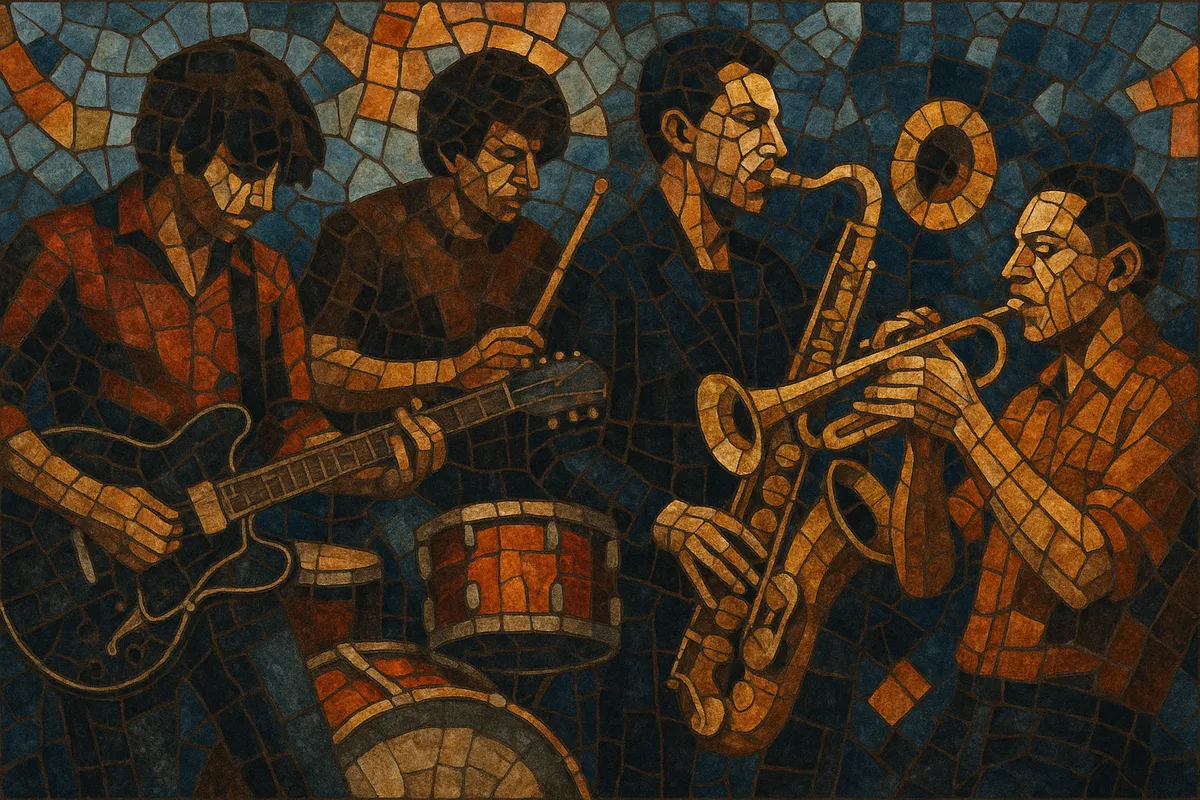Jazz rock is a hybrid style that merges the improvisational language and harmonic richness of jazz with the amplified energy, backbeat, and song forms of rock.
It typically features electric guitar, bass, and drums alongside jazz-oriented instruments such as saxophone, trumpet, and keyboards, often arranged in horn sections. Extended chords, syncopation, and improvisation coexist with catchy riffs and driving grooves, yielding music that is both virtuosic and accessible. While closely related to jazz fusion, jazz rock generally keeps a stronger tie to rock songcraft and backbeat-centered rhythms.
Jazz rock emerged in the United States in the late 1960s as jazz musicians embraced electric instruments and the rhythmic directness of rock. Rock bands were simultaneously expanding harmonically and structurally under the influence of jazz and blues, creating fertile ground for cross-pollination. Early horn-driven groups like Blood, Sweat & Tears and Chicago brought jazz voicings and brass arranging into radio-friendly rock formats, while artists such as Miles Davis catalyzed a more exploratory electric approach that overlapped with jazz fusion.
During the early 1970s, two parallel currents solidified. In the U.S., jazz rock coexisted with and fed into the burgeoning fusion movement, represented by Jeff Beck’s electric, improvisation-rich records and by guitar-forward ensembles that emphasized virtuosity over extended rock grooves. In the U.K., bands like Soft Machine and Colosseum fused jazz improvisation with psychedelic and progressive rock experimentation, influencing the Canterbury scene. Meanwhile, Frank Zappa’s writes and arrangements bridged complex jazz-influenced harmony with rock instrumentation and satire.
Mid-to-late 1970s artists like Steely Dan distilled jazz rock into sophisticated studio productions—tight grooves, extended chords, and jazz-tinged melodies—while preserving accessible song forms. Santana and other rock acts incorporated jazz modal harmony and improvisation into Latin-rock frameworks. This era helped normalize jazz harmony and session-level musicianship within mainstream rock and pop contexts.
Though the peak mainstream visibility faded, jazz rock’s DNA spread widely. It informed yacht rock and sophisti-pop, influenced progressive and jam bands, and shaped studio craft and chordal language in AOR and adult-leaning pop. Contemporary artists continue to draw on its palette—merging jazz voicings, odd meters, and improvisation with modern rock, indie, and even hip-hop production aesthetics.


